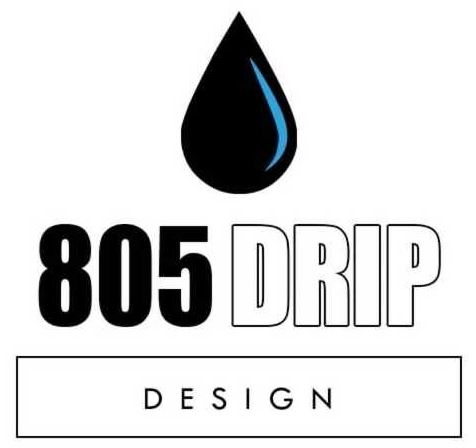Drip irrigation seems straightforward: Water, drop by drop, to deliver water efficiently to the plant. But are the benefits of drip irrigation worth all the hype? It depends on your situation, but very often the answer is yes.
Not only will you save water, but you’ll save money, prevent erosion, and discourage disease in your plants. You can fertilize (or fertigate) via your drip system, too. Let’s take a deeper dive and learn seven reasons why drip irrigation is beneficial for your wallet, your schedule, and the environment.
1. Save water
Gardens need water, but water conservation is a key concern for many, especially in the West, which has lower rainfall to replenish the water supply. The good news is that drip irrigation can reduce your gardening water use by up to 50%.
Here’s how: While drip irrigation decreases the amount of water you use, it also increases water efficiency. Drip irrigation systems ensure that 90% to 95% of the water reaches the soil surface. When you water with overhead sprinklers during the day, you may lose 20% to 30% of the water that you apply. That means if you apply 1 inch of water, only 0.7 to 0.8 inches will reach your plants.
If you’re curious how drip irrigation compares with overhead sprinklers, here are a few facts. With sprinkler irrigation, several factors can negatively impact your water efficiency:
- Humidity levels (greater evaporation in drier air, less or none in moist air)
- Wind
- Height of sprinkler
- Distance of spray
- Water droplet size (influenced by water pressure and nozzle design)
- Air temperature
- Solar radiation
You’ll often hear experts advise gardeners or grass aficionados to do their overhead watering early in the morning, before the sun comes up. That’s because there is high humidity, no sun, and air temperatures and wind speed are low. During the day, you may lose 20% to 30% of your overhead water, but in the early morning hours, that water loss goes down to about 15%.
2. Save cash
So, how much will this save you on your water bill? It varies greatly by region, but think of it this way: If you lose 20% to 30% of your water by using a sprinkler in the middle of the day, that also means 20% to 30% of that cost is spent on water that never reaches your plants. That’s not an efficient use of your water or money.
Utility bill savings can quickly pay the cost of drip irrigation installation.
Pro Tip: What about saving frustration? If you’re a beginner, consider a drip irrigation kit. These are very affordable and a great way to get your water up and running with minimal aggravation.
3. Prevent erosion and runoff
Erosion and runoff are major problems for city stormwater departments, farmers, and home gardeners alike. Before we talk about why these topics are important, let’s define our terms:
Erosion: When bits of soil are moved from one place to another by water or wind. Eroded soils are often deposited in bodies of water, such as streams or bays.
Runoff: When water isn’t absorbed into the soil and flows into a storm drain or body of water. This water often carries sediment, pesticides, phosphates, and fertilizers, and deposits them into these drains or bodies of water.
Reducing erosion and runoff helps maintain the integrity of our soils and our water supply. With drip irrigation, these problems are virtually eliminated. Set your watering schedule to deliver the proper amount of water for your plants and soil type to eliminate erosion due to overwatering.
Note: Water, wind, ice, and gravity may cause erosion in your lawn, ornamental bed, or garden, but drip irrigation shouldn’t contribute to this problem. Check out our article “How to Control Erosion in Your Yard” for actionable tips on how to curb erosion in your garden, lawn, and landscape.
4. Reduce weed growth
Want fewer weeds? With drip irrigation, the water you use goes directly into the plant roots. Without water, the weeds in your garden won’t grow as well. This means there won’t be as many weeds to compete for water and nutrients.
Make sure the spacing between emitters or holes matches your plant spacing to ensure the best water efficiency. It’s the best way to deliver more water directly to your plants and to avoid watering the weeds.
5. Discourage disease
Here’s another way the design of drip irrigation helps your garden: it discourages disease. The drip hose applies water at the base of the plant. The result? Leaves stay dry. In short, when you reduce the amount of time the leaves are wet from dew or water, fungi and pathogens are less likely to cause disease in the plant.
Pro Tip: Add mulch to further reduce diseases and encourage plant health. Mulch not only reduces evaporation but also prevents water from splashing on the plant’s lower leaves. Without mulch, water splash can carry pathogens from the soil to the lower leaves. These pathogens then spread up the plant and across to other plants.
6. Save time
You automate your bill pay, calendar reminders, and Amazon deliveries, so why not your garden, as well? Put your drip system on a timer to keep the garden watered regularly, without adding one more thing to your to-do list.
Consider a hose timer with an automatic rain sensor, such as this one from BN-LINK, to avoid overwatering during rainy weather.
7. Fertilize
Did you know you can apply fertilizer via your drip irrigation system? Liquid fertilizer can be applied through the drip irrigation system. Just as with drip irrigation, the solution goes directly into the plant root zone and doesn’t contact the leaves or the weeds. This process is commonly known as fertigation.
Please contact us with any questions!
